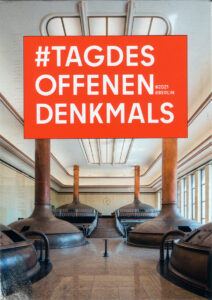About this time, on an every-other-year basis, I would be traveling to Berlin to further investigate the “Tag des offenen Denkmals”—the Day of Open Monuments (2021 program here). I see this event as a “global archive“—one of many I am engaged with, as also the documenta exhibitions in Germany since 1955, which I have written and just published on:
In defining “the global archive,” this essay refers, first of all, to the historical development of exhibitions in Germany that address a global horizon, a distinct cultural project since at least the Enlightenment. After 1945, modern art, which had been removed from public view by the Nazi state, was reintroduced as a project of reeducation as much as aesthetics. Documenta, beginning in 1955, exhibited modern and later artists in the destroyed buildings of the city of Kassel, and expanded its formal and cultural address to a global scale over its fifty-year history. Documenta itself became a kind of continuous archive of its own exhibition history, a mode of formal presentation that increasingly relied on the works it presented. Here I read in detail the archival strategies and form of dOCUMENTA 13, arguably a highpoint of this effort to archive globality as it emerges. “The Global Archive and the Future of Poetics,” Journal of Foreign Languages and Cultures 5, no. 1 (June 2021): 94–108 [pdf here].













